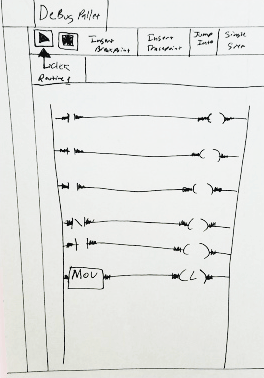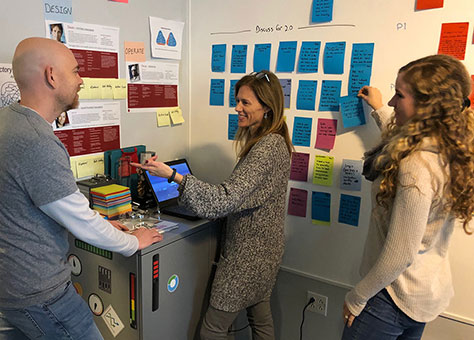Traditionally, the focus of our UX designers’ efforts has been on providing a highly detailed set of deliverables that includes workflow diagrams, wireframes, and detailed UI specification documents. These deliverables, although still necessary, often leave gaps in our team’s collective problem-solving power.
Driven by a desire to expedite decision-making and encourage knowledge transfer within and across teams, we have adopted an iterative, collaborative UX design approach for our next-generation products at Rockwell.
Lean UX requires team-wide acceptance of collaborative engineering deliverables that drive knowledge transfer, facilitate estimation, and support validation—both with internal stakeholders and users—during the product-development lifecycle. Our Lean UX approach decouples the design process from traditional design deliverables by involving other engineering team members in the problem-solving process.
A designer creates low-fidelity designs, spending a minimal amount of time creating design concepts. We limit our time investment in these documents because their real purpose is to create a dialogue—both within the product team and with business owners and users. The low fidelity of these deliverables also encourages nondesigners and key stakeholders to join in on the decision-making.
Reviewing and Testing Design Prototypes
Low-fidelity designs can range from whiteboard sketches to paper prototypes to photoshopped screenshots. Since our designs take less time to create, we can easily change them as necessary. As the designer collects feedback from team members and stakeholders, he or she iterates on the design—turning around the next versions of the design in hours, not days. With this level of design, we can execute each build-measure-learn cycle with agile teams much more quickly.
Figure 1 shows an example of a whiteboard sketch of a proposed user interface for a new feature. The conversation we had around this sketch gave the entire product team the opportunity to voice any concerns and provided enough insight for us to set a new direction for the design and make decisions about whether to begin estimating and prototyping.


